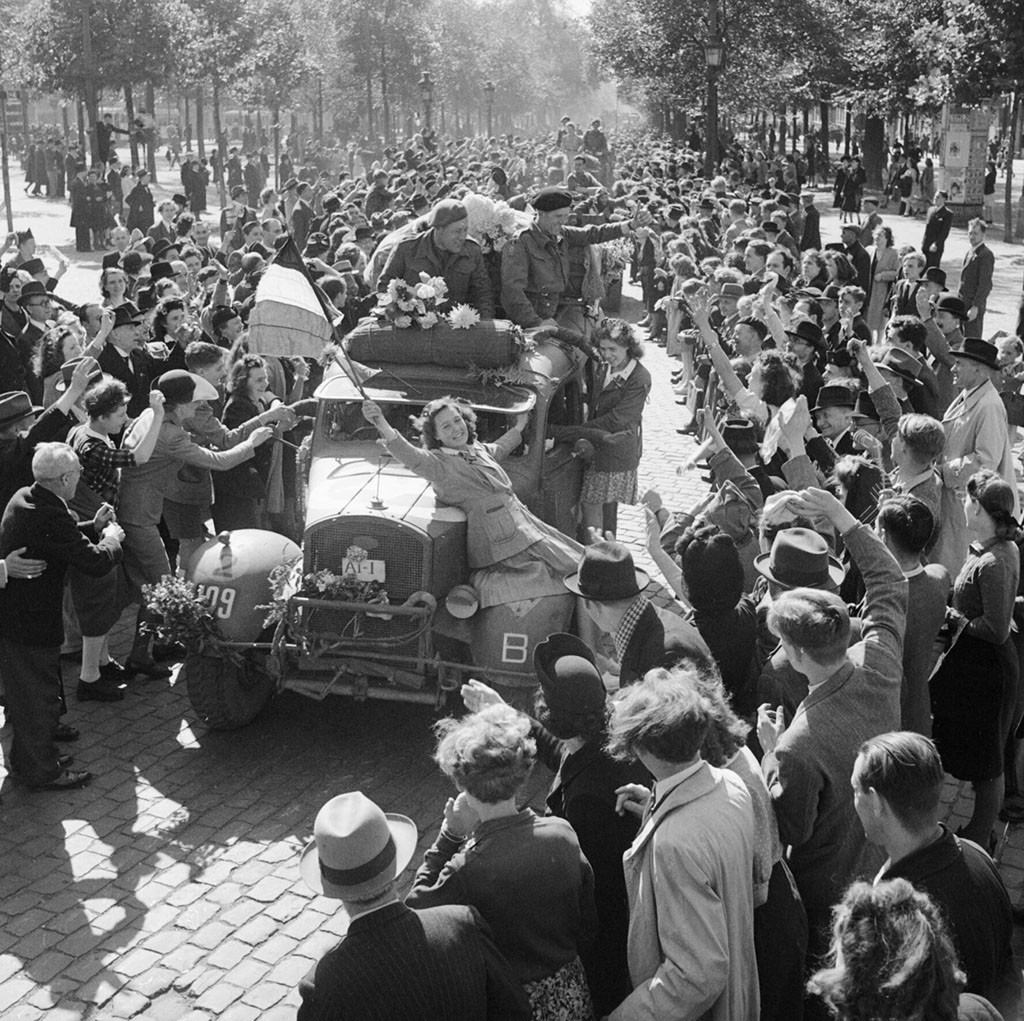On 2 September 1944 the Guards Armoured Division of commanding officer Allan Adair was in the region of Douai, when late in the evening Lieutenant-General Brian Horrocks, commander of the XXXth British Corps, gave the order to march on Brussels. He and his men started off in the early morning of 3 September and by the evening they entered the city after a high-speed run. They covered more than 120 km in one day. In the morning the Germans took to their heels. In Brussels - as in other cities -the withdrawal of the Germans was accompanied by devastations. Before leaving, the German soldiers set fire to the courthouse in order to burn the documents still stored there. Despite their efforts to extinguish the fire, citizens were unable to prevent the copper dome to collapse. In the evening violent clashes between resistance fighters and German soldiers still occurred in the Parc du Cinquantenaire. The next day, on September 4, the 1st Infantry Brigade of the Free Belgian Forces - also known as the Piron Brigade (Brigade Piron) - made a victorious entry alongside British soldiers. Brussels’ inhabitants were pleasantly surprised to discover compatriots among their liberators. On 7 September General Montgomery officially met the mayor of Brussels at the City Hall and complimented Colonel Piron for the military feats of his brigade during the Normandy campaign. On 8 September the government in exile of Hubert Pierlot returned to Brussels and restored the lawful democracy in the country, not knowing that the harsh winter of the Battle of the Bulge was yet to come.
